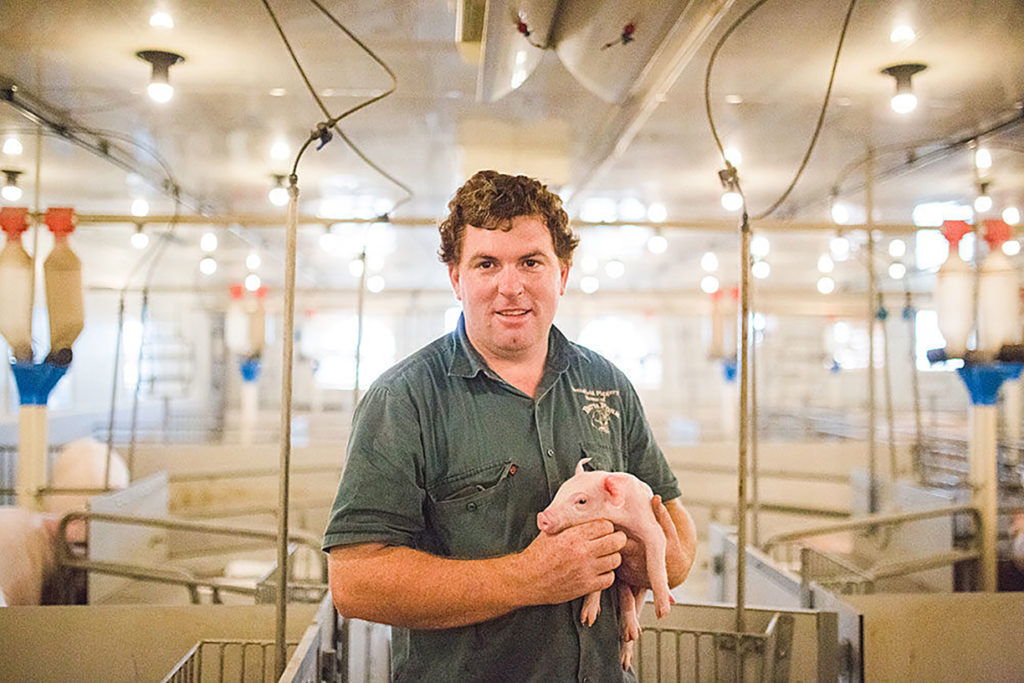
Discovering how pig effluent managed to power a 16,000 head piggery and the evolution of the first methane-powered tractor were among highlights at the second day of Bioeconomy Bundaberg 2020.
The two-day conference revealed many innovative ways to drive a bioeconomy for the Bundaberg Region into the future.
Mayor Jack Dempsey said major savings and environmental outcomes were achievable across wide-ranging businesses through a raft of ideas involving local waste products to create sustainable energy solutions.
“The common theme that has flowed through the conference has been the utilisation of raw materials that are readily available across the Bundaberg Region that can be converted to produce cheaper and environmentally friendly energy,” Mayor Dempsey said.
Laurie Brosnan, general manager of one of Australia’s premium pork producers, BettaPork, is a powerful advocate for the savings that investment in alternative energy can reap.
The Brosnan family run a 16,000 head piggery and it is primarily the use of pig effluent that is processed to power the operation.
“Our electricity bill went from $50,000 per month to $130 per month through the use of the biogas we were converting to power,” he said.
“Our gas use, needed primarily for heating, dropped from $8000 per month to zero because we had created our own supply.
“Our initial outlay to set up the required digesters and other infrastructure was $4.8 million but we are well on the way to recouping that outlay.”

New Holland methane-powered tractor
Farm machinery giant New Holland has developed the first methane powered tractor which will be commercially available in 2022.
Ben Mitchell, product segment manager with the company, said the T6 Methane Power is the culmination of New Holland’s pioneering work on the use of alternative fuels through its Clean Energy Leader strategy.
“This represents a significant step forward on the path to decarbonizing agriculture,” Ben said.
“The T6 is six cylinders and 179 horsepower. It has exactly the same level of performance as its diesel equivalent.
“The big difference is the 30 per cent saving on running costs and the 10 per cent reduction in carbon dioxide emissions. With a step up to the use of biomethane to power the tractor emissions are near zero.”
Teys Australia, one of the country’s largest meat processors and exporters is driving programs to meet a 30 per cent renewables target by 2023.
Carl Duncan, Teys Australia group manager resource efficiency and sustainability, said the program began in 2018 and Teys was already achieving results that are significantly meeting sustainability targets.
Carl said the company was committed to achieving reductions in water, carbon, and power usage through the construction of solar and biogas facilities as part of its business structure portfolio.
“Our Low Emissions Energy Hub (LEEH) project will combine five renewable energy technologies in one project at our Wagga Wagga facility,” Carl said.
“The goal is to make our Wagga site completely energy self-sufficient, and we hope that Project LEEH can act as a pilot program, not just for Teys, but for our wider industry.”
Mayor Dempsey said he considered the Bioeconomy Bundaberg conference was an outstanding success.
“The information that was shared through this gathering has, I am certain, fired the imagination of many who were in attendance,” he said.
“The feedback Council has received has been immensely positive. The requests have gone out to make this an annual event.”
- Earlier report: Bioeconomy shapes Bundaberg’s future




